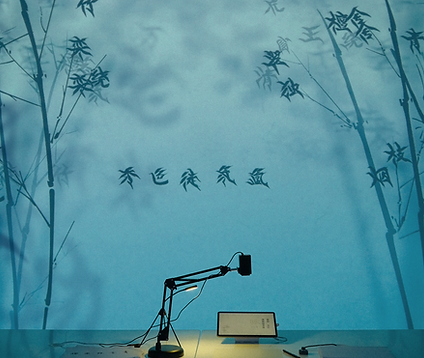Creativity-AI-Colab
Artificial Intelligence Augments Design Creativity:
A Typeface Family Design Experiment
Abstract. This paper attempts to explore a way to augment design creativity with artificial intelligence through a typeface family design experiment. At the beginning, the article briefly reviews the theory of creative generation, and based on the commonality of these theories, the design creative model of “Inspiration - Creation - Reflection - Re-Creation - Re-Reflection” is summarized. Then, the hypothesis of artificial intelligence augment design creativity based on this model was proposed. In order to prove the feasibility of this hypothesis, we have carried out an experiment of typeface design for Chinese characters. The problem to be solved in this experiment is the contradiction between traditional Chinese character design method and large-scale diversification of information needs. We propose to design a Chinese character typeface family instead of designing a typeface which provides diverse character experience based on the concept of “one character with thousands of forms”. In order to obtain the typeface family, we adopt Generative Adversarial Networks and select different typical Chinese typefaces as data for model training, finally generate the diverse typefaces. This design method is completely different from the traditional typeface design method and it has produced a new typeface design form. In general, the designer initiated the button of design creativity according to the design problem. The artificial intelligence continuously gives the result of the learning while the designer continuously responds to that. The interaction between designers and the artificial intelligence brings out a new type of Human-machine collaborative relationship, that is: artificial intelligence augments design creativity.

Wind from Bamboo:
A Chinese Handwriting Mingling Interactive Installation Based on Human-Ai Collaborative Font Design
In the era of information, the feeling that the pen tip rubs against the paper is getting farther away, and the way of writing Chinese characters with strokes is gradually alienating. In response to this problem, this work tries to help people relive the touch of handwriting through the mingling of real and virtual experiences. The designer collaborated with AI to design a Chinese font that integrates bamboo leaves’ shape and Chinese characters’ structure. Based on the font, an interactive installation was set up to start a virtual Chinese poetry bamboo forest scene through real handwriting behavior.
From Cure to Care:
Digital Product and Service Design forHospice Care of Disabled Elderly —
A Case Study of QingGang Nursing Center, The First Affiliated Hospital of Chongqing Medical University
Abstract. As China enters a deeply aging society, the demand for healthcare and elderly care continues to grow, making end-of-life care critically important in addressing the needs of older adults in their final stages of life. This study develops and validates a novel C-NIC model to optimize digital tools and care workflows through human-centered design research, addressing the emotional and physical needs of disabled elderly patients while reducing caregiver burden. By identifying issues and analyzing needs within service processes and situational tasks, the study innovates digital product and service design practices tailored to hospice care for disabled elderly individuals in the context of integrated medical and elder care. Field research at QingGang Nursing Center demonstrated that the C-NIC model improved caregiver efficiency by 30% and enhanced patient emotional well-being through sensory-based interventions. The study further examines human-centered design and service optimization from the perspectives of behavior, needs, and emotions in specific contexts.